This is a continuation of a test of the following lenses on the Sony a7RII:
- Zeiss 85mm f/1.8 Batis.
- Zeiss 85mm f/1.4 Otus.
- Leica 90mm f/2 Apo Summicron-M ASPH.
- AF-S Nikkor 85mm f/1.4 G.
- Sony 90mm f/2.8 FE Macro.
The test starts here.
I lit a slanted-edge target with two Westcott LED panels, and set the color temperature to 5000K. The target has a medium-contrast Siemens star in the center, which I used for both manual and automatic focusing.
I mounted a Sony a7RII to the Cognisys computer-driven focusing rail. I set the controller up to use 192mm of travel and make 49 exposures 4mm apart. I set the assembly 8 feet from the on-axis target, mounted the lens, focused a little short of mid-rail using manual focusing, and focused on the star using AF-S with flexible spot, PDAF on, AF priority. I used two spot sizes, small and medium. I exposed 49-shot series. I used f/1.8 and f/5.6. I used Jack Hogan’s Matlab program, MTF Mapper, and DCRAW to pick the horizontal edges and calculate the MTF50s for the raw color planes, imported the data into Excel, and plotted the results in cycles per picture height vs subject distance change (note: not image distance change, which is what I used yesterday).
At f/1.8 and manual focus:
I tried to used the small spot, but the camera couldn’t focus on more than half the shots, so here are the curves for the medium spot:
The focus is very consistent, more so than I could do manually. The red channel is much better focused than the other two, however. Let’s look at the MF curves to see where the camera is focusing.
It looks like it’s focusing about where the red circle is, which is a little bit off the red peak, and in the wrong direction.
Manual focusing at f/5.6:
AF with the small spot size:
AF with medium spot size:
The medium spot size produces more consistent results, but it’s not focysing on the right color plane to about the same degree.
Looking at the MF curves again:
It is apparent that it’s focusing on the wrong side of the red channel peak.
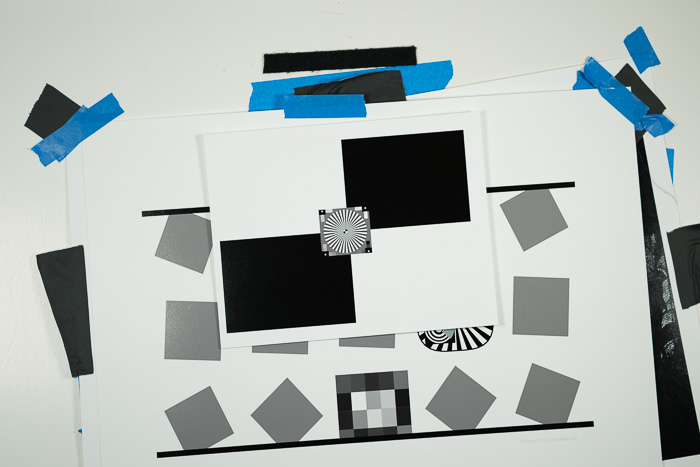
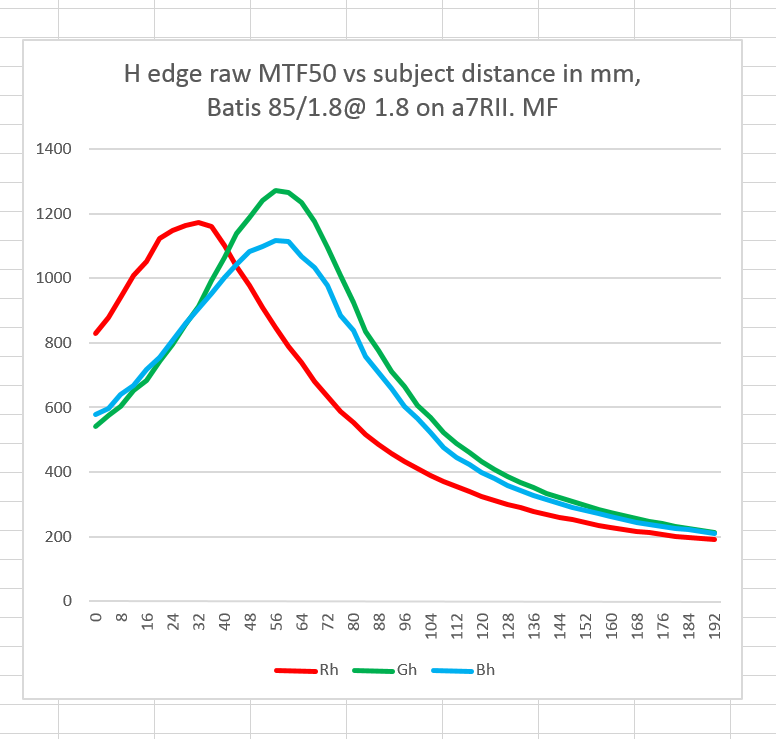
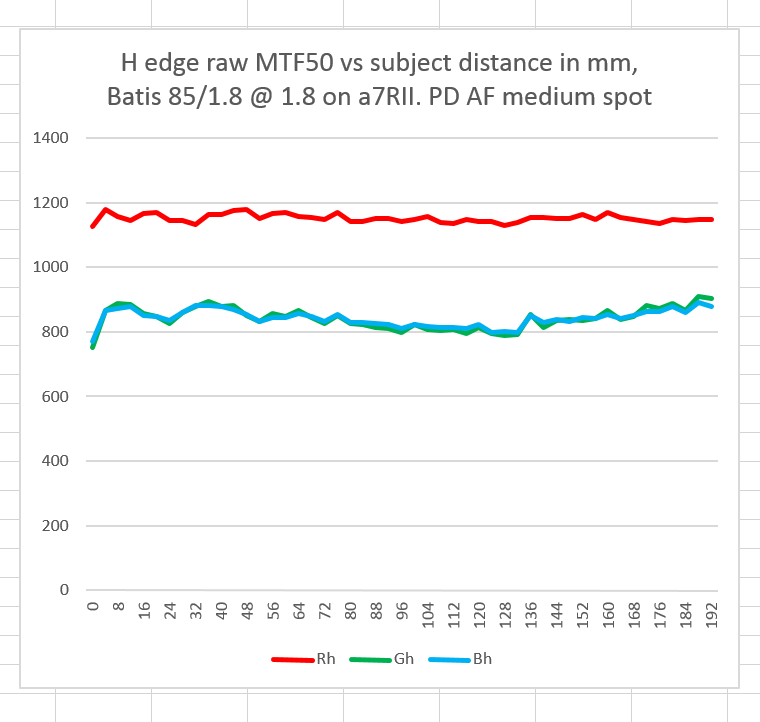
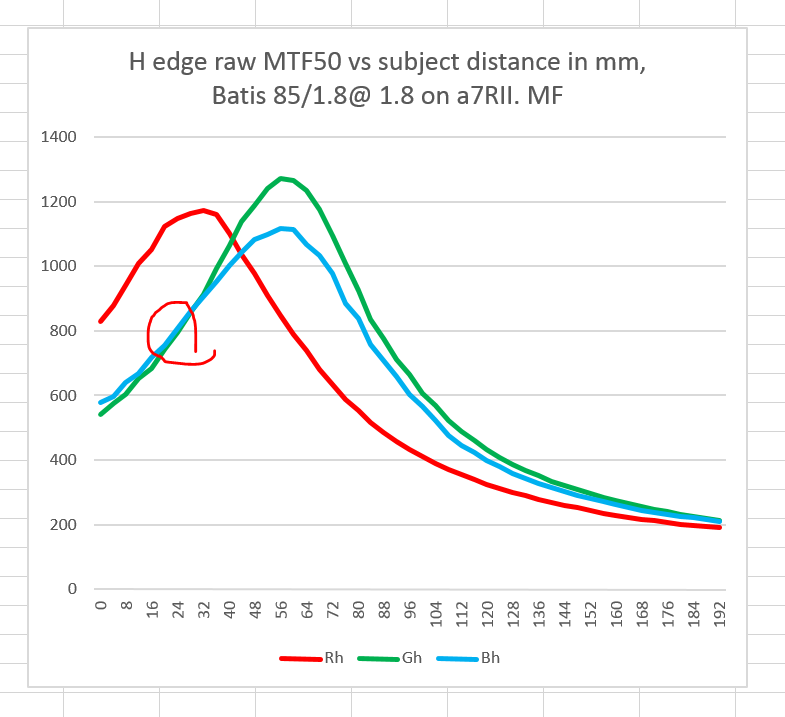
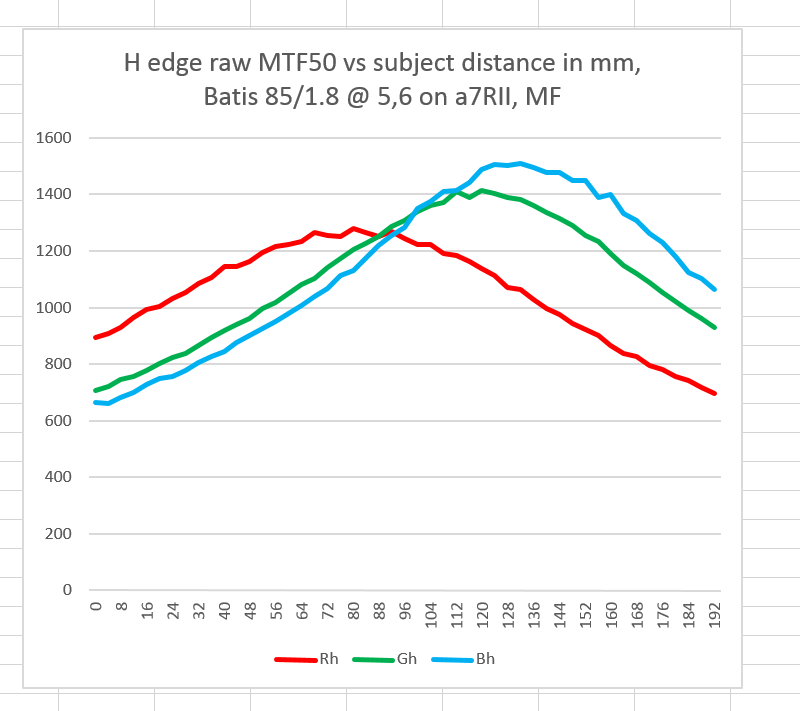
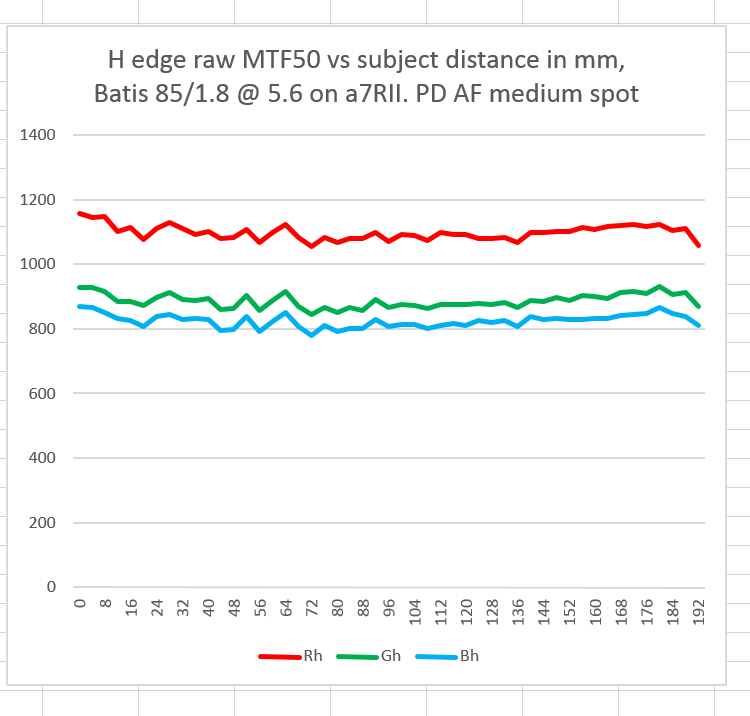
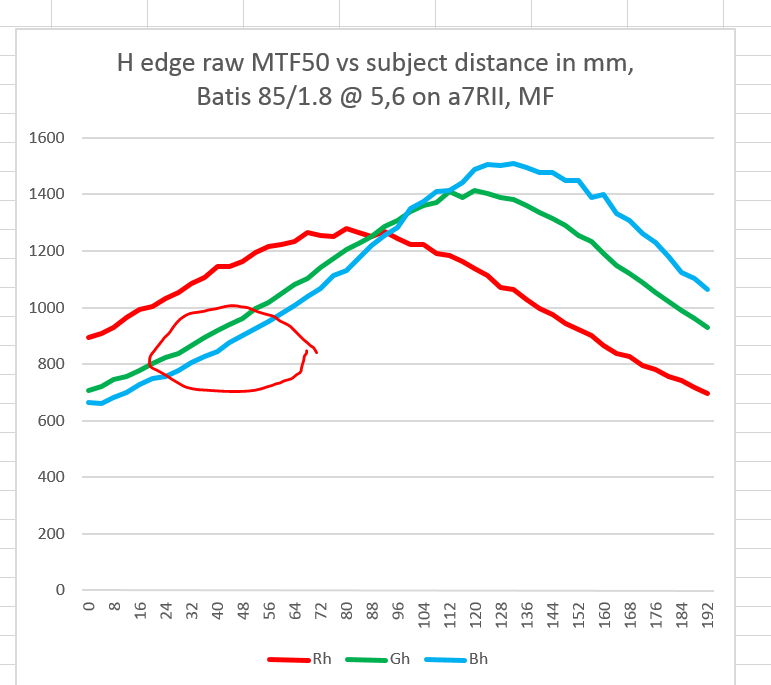
N/A says
so it does not look like PDAF is followed by a single CDAF step then ?
David Braddon-Mitchell says
Don’t think there’s evidence either way here; the tendency to focus for the red channel seems to be there regardless of whether the camera is set for CDAF or PDAF, which is compatible with PDAF meaning PDAF and a CD optimisation pass, but equally compatible with not such pass.
Andrew Dodd says
This is going back quite a way in time – but in AF-C it typically prioritizes PDAF without a CDAF followup.
Jim only specifies spot size but doesn’t mention AF-C vs. AF-S – however since he says PDAF I am assuming AF-C
Erik Kaffehr says
Hi Jim,
Could it be the case that the camera is using the focus assist light?
It is red, so it may be the reason it uses the red pixels. Just a long fetched idea…
Best regards
Erik
Jim says
Focus assist is off.
Bumpy says
I’m out of my depth here, but don’t I recall that a given CoC is distributed around point of ideal focus 1/3rd front and 2/3 away? Perhaps the slight front focus bias is a hedge against most users expecting focus falloff to be balanced around point of ideal focus vs. 1/3 front. I guess also I am assuming the focus tracks red channel for some technical reason and front focus relative to red is intentional bias.
Jim says
The fact that the red rays focus on objects closer to the camera than the blue and green ones as a function of the LoCA in the Batis. As we’ve seen in other lens tests in this series, LoCA can order the focal planes of the three raw layers in other ways depending on the lens design. I suppose, if the engineers dliberately wanted to bias the AF mechanism for front focusing, they could have the lens report its most front focusing plane to the camera when the lens is mounted, so what you are proposing is technically possible.
But would the engineers deliberately design an AF system that delivers less than the best sharpness at the chosen focal point?
Jim